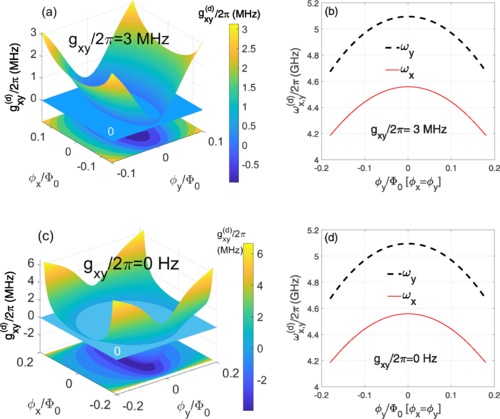
近日,山东浪潮人工智能研究院有限公司的李仁刚及其研究小组与北京工业大学的赵艳军以及加拿大滑铁卢大学的Hui-Chen Sun等人合作并取得一项新进展。经过不懈努力,他们利用双谐振腔耦合器控制超导电路中的量子比特-量子比特耦合。相关研究成果已于2024年1月2日在国际知名学术期刊《物理评论A》上发表。
该研究团队提出了一种理论方案,使用两个固定频率的谐振器耦合器来调节两个Xmon量子比特之间的相互作用。通过两个谐振器引起的两个量子比特之间的间接相互作用可以相互抵消,因此不需要直接的量子比特-量子比特耦合。研究人员可以通过弱直接量子比特-量子比特耦合来抑制静态ZZ耦合,甚至可以通过双路耦合器的破坏性干涉来消除静态ZZ耦合。
交叉克尔共振会在静态ZZ耦合中产生额外的极,因此在双量子比特门过程中应避免这些极。双谐振腔耦合器方案可以解除超导量子芯片设计中的一些限制,减轻静态ZZ耦合,为未来的超导量子芯片提供了一个有前途的平台。
附:英文原文
Title: Controlling the qubit-qubit coupling in the superconducting circuit with double-resonator couplers
Author: Hui Wang, Yan-Jun Zhao, Hui-Chen Sun, Xun-Wei Xu, Yong Li, Yarui Zheng, Qiang Liu, Rengang Li
Issue&Volume: 2024/01/02
Abstract: We propose a theoretical scheme of using two fixed-frequency resonator couplers to tune the interaction between two Xmon qubits. The indirect interaction between two qubits induced by two resonators can cancel each other, so direct qubit-qubit coupling is not essential for the switching off. So, we can suppress the static ZZ coupling with the weak direct qubit-qubit coupling and even eliminate the static ZZ coupling through the destructive interferences of the double-path couplers. The cross-Kerr resonance can induce additional poles for the static ZZ coupling which should be kept away during the two-qubit gates. The double-resonator couplers scheme could unfreeze some restrictions during the design of superconducting quantum chips and mitigate the static ZZ coupling, which might supply a promising platform for future superconducting quantum chips.
DOI: 10.1103/PhysRevA.109.012601
Source: https://journals.aps.org/pra/abstract/10.1103/PhysRevA.109.012601
Physical Review A:《物理评论A》,创刊于1970年。隶属于美国物理学会,最新IF:2.97
官方网址:https://journals.aps.org/pra/
投稿链接:https://authors.aps.org/Submissions/login/new
